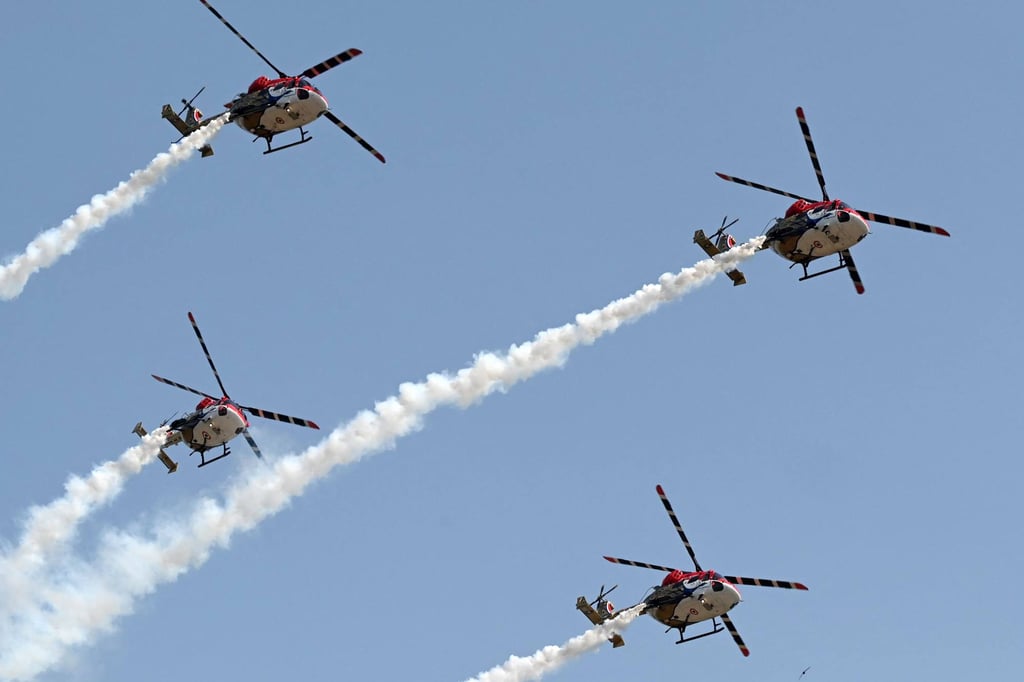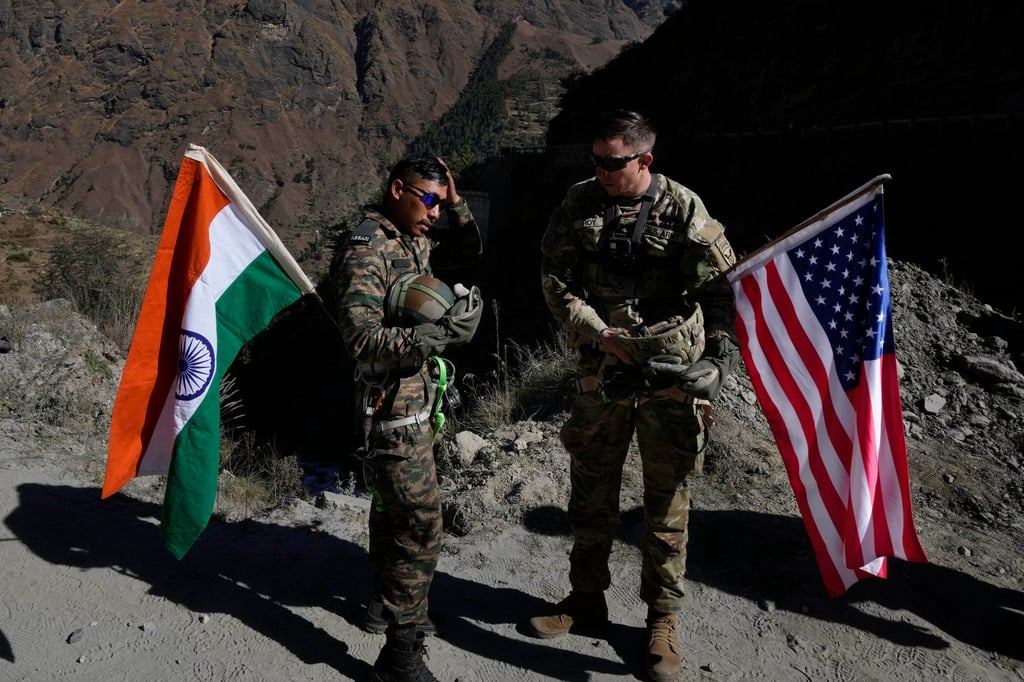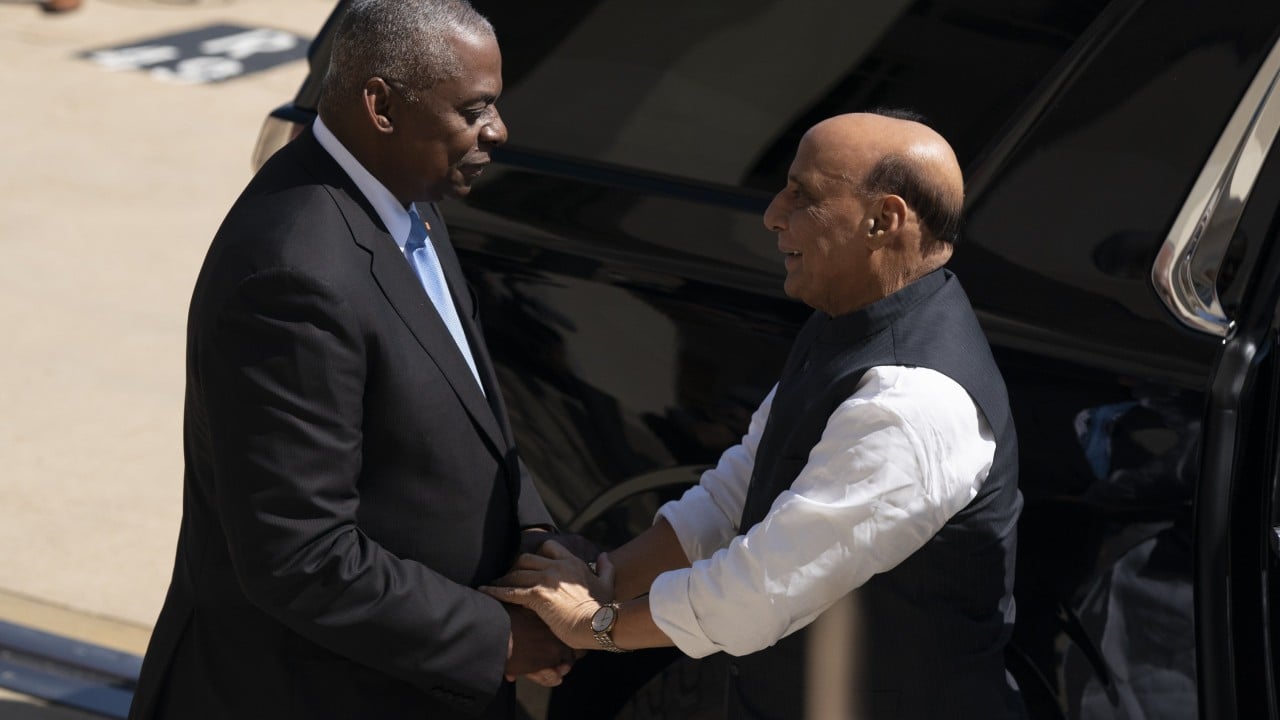India has secured two pivotal defence agreements with the United States, signalling a deepening American commitment to South Asia as China’s military footprint expands.
This development emerged during Indian Defence Minister Rajnath Singh’s four-day visit to the United States this week, with the two nations signing a Security of Supply Arrangement (SOSA) and a Memorandum of Agreement on the Assignment of Liaison Officers.
Michael Rubin, a former Pentagon official, heralded these deals as a watershed moment, indicating that the US is finally translating its rhetoric into tangible support for India. “The question now is how the US will build upon this agreement,” he said, hinting at the potential for further collaboration. “Negotiating the first agreement is always the hardest; the second, third, and fourth come easier.”
The SOSA, a non-binding bilateral pact, commits both countries to prioritise support for defence-related goods and services. The agreement aims to ensure access to vital industrial resources and address supply chain vulnerabilities critical to national security. The US Department of Defence said India would receive assurances under Washington’s Defence Priorities and Allocations System in return for Indian companies providing priority support to the US.
Rubin, a senior fellow at the Washington-based American Enterprise Institute think tank, noted India’s urgent need for reliable alternatives to Russian military supplies, particularly in aircraft engines and missile systems. “The thing to watch would be if top-tier systems enter into the negotiations,” he said, suggesting that traditional US concerns about India’s ties with Russia were diminishing.
New Delhi has pulled off a miracle: achieving consensus in Washington
“The fact that this agreement has met with no congressional resistance shows that New Delhi has pulled off a miracle: achieving consensus in Washington,” he said, emphasising that the US is increasingly betting on India while the influence of the Pakistan lobby wanes.
With these agreements, India joins an elite group of 18 SOSA partners, which includes nations like Australia, Canada, and Britain, marking a significant step in defence cooperation.
Richard Rossow, a senior adviser at the Washington-based Centre for Strategic and International Studies think tank, highlighted the potential implications of the pact. “If either of our nations ended up on the precipice, or in combat with an adversary, the SOSA could help accelerate the delivery of crucial weapons and materials required for defence,” he said, reflecting on the urgency of the situation.
Recent skirmishes between India and China, although without gunfire, underline the precarious nature of regional tensions. Rossow warned that miscalculations could easily escalate, particularly given China’s aggressive posture toward its neighbours.
While China’s influence grows across South Asia, especially in Islamabad and the Maldives, Rossow said he was confident in India’s military advantages its nuclear-armed neighbour, suggesting that the SOSA is less likely to be activated in response to Pakistan-related emergencies.

India and US have other strategic agreements, including the Logistics Exchange Memorandum of Agreement, signed in 2016, and real-time intelligence sharing since 2018 under the Communications Compatibility and Security Agreement.
“Reviewing other SOSA deals to which the United States is a party, there are not prescribed limits on what India can procure under this agreement. However, this agreement does not itself provide India a higher level of sophisticated weaponry than would otherwise be approved,” Rossow said.
“Other regulations governing technology release remain in effect, but this agreement facilitates expedited deliveries of contracted goods and services.”
In 2019, India and the US took a significant step by signing the Industrial Security Annex, which allowed the sharing of classified US information with private Indian defence firms – a shift from the previous restrictions under the 2002 General Security of Military Information Agreement.
Rossow emphasised that India would not deepen its partnership with the US without substantial security concerns. “China is India’s only competitor with superior military power. SOSA provisions are unlikely to be invoked barring a major emergency, so yes, I would expect China is firmly in mind with this new agreement,” he said.

An Indian defence analyst, who preferred to remain anonymous, hailed the SOSA as a milestone. He mentioned that during ongoing bilateral talks, the Indian defence minister and the US secretary of defence had “agreed to advance several co-production projects in jet engines, unmanned platforms, and munitions”.
The analyst also highlighted the Reciprocal Defence Procurement Agreement (RDPA) as an agreement that would potentially have more impact. “While earlier deals focused on interoperability, both SOSA and RDPA will streamline defence commerce, making it easier for private companies to bid on each other’s contracts.”
The RDPA will enable US firms to bypass the Trump-era “Buy American” statute, allowing them to establish manufacturing in India and take part in joint defence projects. The US currently has RDPA agreements with 28 countries.
Defence expert Raj Shukla, a retired lieutenant general of the Indian Army, viewed the SOSA as a continuation of strengthening Indo-US defence ties.

“We have had agreements in the past … and SOSA will further cement it. It will enable both countries to buy military supplies easily and therefore strengthen the collaboration between the two ecosystems,” Shukla said. “A host of new pathways in technology, critical minerals will get opened. So it is a significant step forward.”
Meanwhile, the Memorandum of Agreement on the Assignment of Liaison Officers allows each country to post military officers within the other’s forces. India will assign an officer to the US Special Operations Command in Florida under the pact.
Shukla said that this appointment would improve interoperability and intelligence sharing thanks to the US’ extensive technological expertise.
“India’s start-ups and corporate measures to get into partnerships with the Americans will help us to expand our inventory or diversify our inventory which is very Russia-focused,” he said.
While the SOSA is not explicitly aimed at countering China, Shukla pointed out that a technologically advanced Indian military aligns with American interests.
“It will help temper Chinese military expansion and ensure Asia remains bipolar rather than unipolar,” he said. “But these agreements don’t specifically target China.”


